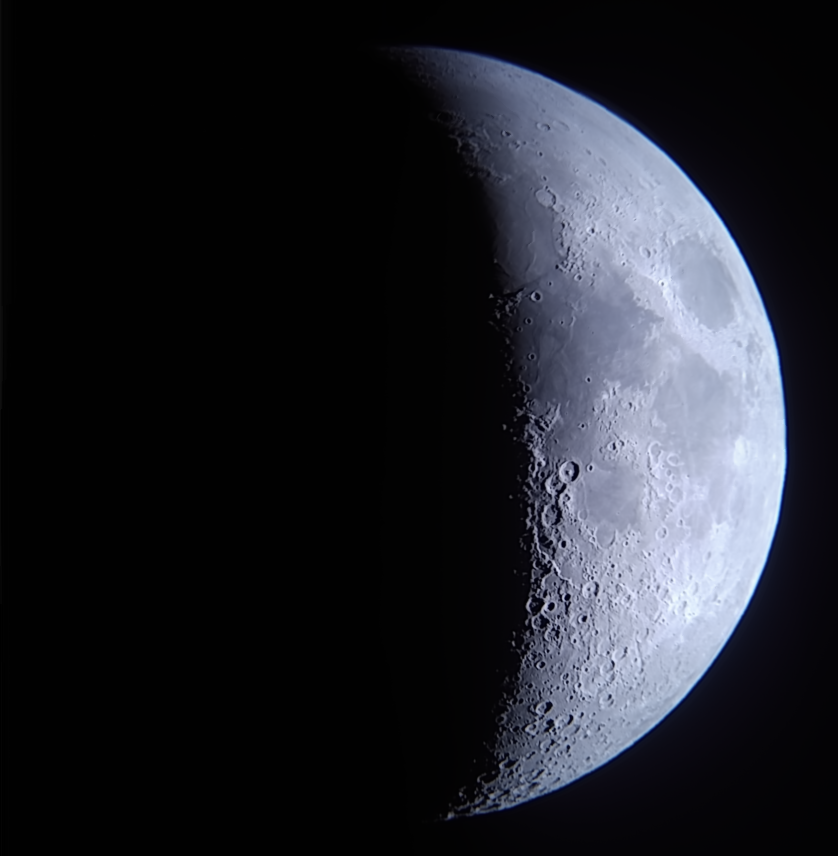
| Observer: | Tom Campbell |
| Location: | College Station, Texas (Long: 96°17'W Lat: 30°37'N) |
| Telescope: | Zhumell 12" f/5 Dobsonian |
| Eyepieces: | Explore Scientific 18mm (83x) Explore Scientific 11mm (136x) |
| Lenses: | Celestron Luminos Barlow (2.5x) |
| Weather: | The sky was clear and transparent. Temperature was in the low 70s (F) with a slight breeze. |
The transparency tonight was much improved over what it has been for the last week. The bright crescent moon was high in the sky, so I knew I wouldn't be able to see a lot of the fainter objects on my observing list. No matter, I wanted to play a bit with my smartphone anyway, and then perhaps look at a few double stars.
My first target was obvious: the moon. I attached my camera to my telescope and began snapping both still shots and videos. As much as I hate how it washes out the night sky and makes it harder to see faint celestial objects, there's something mesmerizing about watching it drift across the field of view.

I also pointed the camera at Saturn, but it was already too low in the sky to get any good results. I will have to try for it again on our next lap around the sun.
Cygnus the Swan was flying down away from zenith and into the northwestern sky. I aimed Zoomie towards the constellation and began my hunt for double stars there.
| 17 Cyg | Cygnus | Double Star | 9:40pm CDT |
This double star is easily split at 83X. The primary is bright yellow white. The secondary component is a couple magnitudes fainter and appears white. |
|||
| OΣ 394 | Cygnus | Double Star | 9:50pm CDT |
This is very colorful. The primary is orange and the fainter secondary is deep blue. There is a third star very near the blue star that is much fainter. The best view was at 208X. A brighter white star is nearby in the same field, adding to the contrast. |
|||
| 26 Cyg | Cygnus | Double Star | 10:00pm CDT |
This is a wide double. The primary is bright yellow. The companion was about a magnitude fainter and sometimes appeared blue-white. This double is in a rich region of the Milky Way and the separation is enough that you wouldn't necessarily recognize them as being a double star system without knowing beforehand. |
|||
| 52 Cyg | Cygnus | Double Star | 10:05pm CDT |
I've seen this star several times when looking at the Veil Nebula, but always at low power and didn't realize this was a double star. At 208X, the primary is pale yellow. The companion is much fainter and very close to the primary. It sometimes appeared orange-white and sometimes blue-white, but the color was difficult to discern because of its proximity to the bright primary. |
|||
It was a worknight and I wanted to do a bit of processing of my images to see if I had anything worth keeping, so I packed it up for the night.